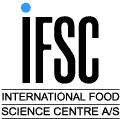Is Our Balanced Food Really Balanced?
Correcting w6/w3 Ratio through Combating Oxidation is the key to the Success for Better Health
Author: Vijai K. S. Shukla
Food is all about balance; it's all about taste.
Tracing back to 1929 to the historic volume 82 of the Journal of Biological Chemistry clearly reveals two opposing views, developed by McAmis and co-workers and the husband-and-wife team of George and Mildred Burr, regarding the essentiality of
ω6 and ω3 fatty acids. The high impact of linoleic acid, the socalled ω6 essential fatty acid (EFA), became a focus in the minds of scientists and technologists, leading to overconsumption of linoleic acid-containing products. Not much attention was
paid to the findings of McAmis and co-workers. For the last three decades, human nutrition research has concentrated on establishing the benefits of oils rich in essential polyunsaturated fatty acids (PUFA) and long-chain polyunsaturated fatty acids
(LCPUFA) to human physiological functions.
Research has shown that EFA are important to living systems and to the regulation
of life processes. PUFA and LCPUFA in the ω3 and ω6 families are the precursors of prostanoids and eicosanoids that have a variety of biological activities. ω3 fatty acids are known to have a direct effect on the heart muscle itself: increasing blood flow,
decreasing arrhythmias, improving arterial flexibility and altering other cellular processes that are associated with heart functions.
Paleolithic man was a hunter-gatherer, eating lean meat, fish, green vegetables, fruits, nuts and berries and exercising heavily and often. In modern Western society, the human diet is composed mainly of wheat, maize (corn), rice and a variety of precooked or industrially fried food, leading to a relative deficiency of ω3 PUFA. The huge intake of undesired oxidized oils from various food sources, coupled with a lack of exercise, also
contributes significantly to the deterioration of human health.
This EFA imbalance is exacerbated by consumptions of meat from animals fed a diet of grain relatively rich in ω6 PUFA rather than wild plants with high ω3 content. Even farmed fish contain lower amount of ω3 PUFA than those living in the wild. Overall, the ratio of ω6/ω3 PUFA in the modern diet is as high as 20-25:1, instead of the ideal ratio of 1:1. The ω6/ω3 ratio

